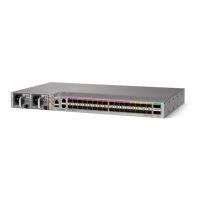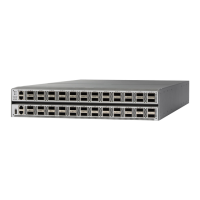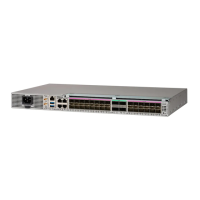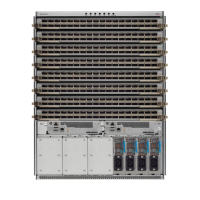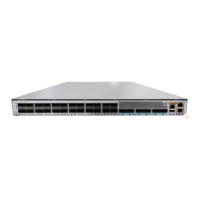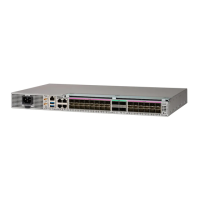• When rack-installed equipment fails, especially equipment in an enclosed rack, try operating the equipment
by itself, if possible. Power off all other equipment in the rack (and in adjacent racks) to give the router
maximum cooling air and clean power.
• Avoid setting up the router in a location in which the router air intake vents may draw in the exhaust air
from adjacent equipment. Consider how the air flows through the router; the airflow direction is side to
side, with ambient air drawn in from the vents located on the front right of the router.
Air Flow Guidelines for Enclosed Rack Installation
To install a Cisco NCS 560-4 Router in a 4-post enclosed cabinet, the front and rear doors of the cabinet must
be removed or be perforated with a minimum of 65% open area (70% for 800mm racks).
If you are mounting the chassis in a 4-post enclosed cabinet, ensure that you have a minimum of 6 inches
(15.24 cm) of clearance on each side of the chassis.
Floor Loading Considerations
Ensure that the floor under the rack supporting the Cisco NCS 560-4 Routers are capable of supporting the
combined weight of the rack and all the other installed equipment.
To assess the weight of a fully-configured router, refer to System Specifications, on page 3 or the Product
Specifications section in the Cisco Network Convergence System 560-4 Router Data Sheet.
For additional information about floor loading requirements, consult GR-63-CORE, Network Equipment
Building System (NEBS) Requirements: Physical Protection.
Site Power Guidelines
The Cisco NCS 560-4 Router has specific power and electrical wiring requirements. Adhering to these
requirements ensures reliable operation of the system. Follow these precautions and recommendations when
planning your site power for the Cisco NCS 560-4 Router:
• The redundant power option provides a second, identical power supply to ensure that power to the chassis
continues uninterrupted if one power supply fails or input power on one line fails.
• In systems configured with the redundant power option, connect each of the two power supplies to a
separate input power source. If you fail to do this, your system might be susceptible to total power failure
due to a fault in the external wiring or a tripped circuit breaker.
• To prevent a loss of input power, be sure that the total maximum load on each circuit supplying the power
supplies is within the current ratings of the wiring and the breakers.
• Check the power at your site before installation and periodically after installation to ensure that you are
receiving clean power. Install a power conditioner if necessary.
• Provide proper grounding to avoid personal injury and damage to the equipment due to lightning striking
power lines or due to power surges. The chassis ground must be attached to a central office or other
interior ground system.
Cisco NCS 560-4 Router Hardware Installation Guide
25
Preparing for Installation
Air Flow Guidelines for Enclosed Rack Installation
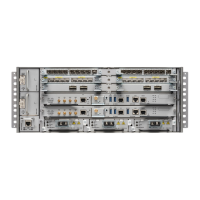
